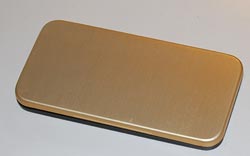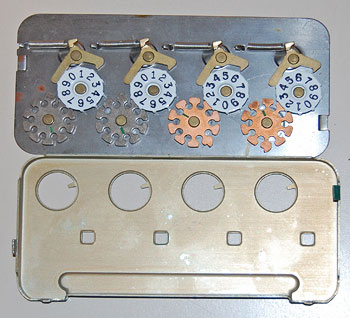 |
|
|
|

|

|
The Ken+Add adder, inside and out |
|
|
|
|
The Ken+Add calculator had pretty low functionality, even for the fifties… it was a four-digit, one-function calculator. And yet it’s hard to dismiss it, for it strikes you immediately with the quality of its design and construction. |
|
|
|
Built in Minnesota in the 1950s by a company I can find no
additional information about, the Ken+Add is one of the many
dial-input adders that were introduced in the first half of the
century. The basic idea goes back to the 17th century, and is often
attributed to Pascal --
though his implementation was more sophisticated, and in any case
came later than that of Wilhelm Schickard. Unlike my Kes-Add and many others, who do addition and subtraction by turning the dials in either direction, the Ken+Add only does addition; turning in reverse fails to effect any needed borrow from the next higher digit. |
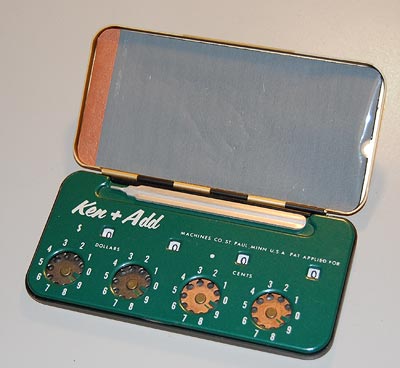 Click photo to enlarge |
|
|
|
Well, I couldn’t resist… I took the thing apart to see what makes it tick. You can see the process in the photos. |
|
|
|
 Click photo to enlarge |
|
|
|
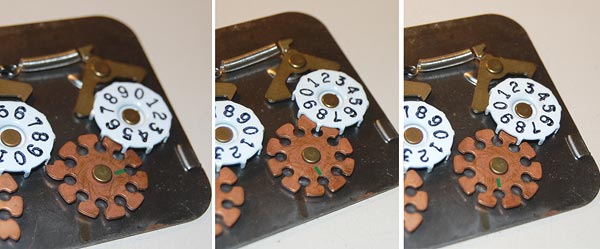 Click photo to enlarge |
|
|
|
An interesting touch on the Ken+Add is the
“Magic slate” fitted in the lid. This uses a trick common in
children’s toys in those days: a peel-back dry writing surface. Use
the stylus to jot interim results on it, and use it again to lift
the top film and erase them. A calculator with a memory! The photo at right shows a printed instruction sheet that goes in the lid, covering the slate when it isn't in use. |
|
|
|
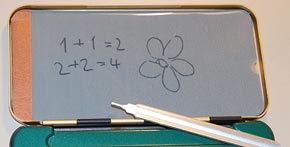
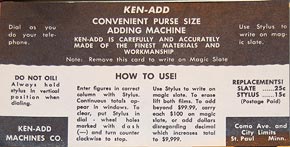 Click a photo to enlarge |
|
|
|
Exhibit provenance: eBay. More info: |
|
|
|
|
|
|
|
Home | HOC | Fractals | Miscellany | About | Contact Copyright © 2008 N. Zeldes. All rights reserved. |
|
